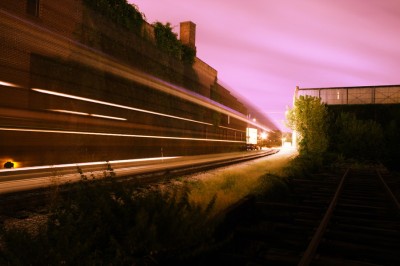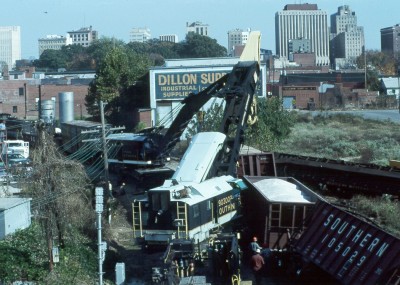
CSX operated General Motors Type SD60
As is evident by the photos sometimes posted here, train spotting is a hobby of mine. Part of this is from hearing family stories when I was younger. My grandfather on my mom’s side spent years seeing the country by hopping boxcars. It was by train hopping that he wound up in Washington state to join the CC Camp before heading off to World War II. My mom’s grandfather was a conductor as well.

above image credit: uliveandyouburn
My dad’s pop was the conductor of “The General“, part of the L&N line (later CSX). During The Civil War, The General was involved in Andrews Raid–which eventually became known as The Great Locomotive Chase. It was later restored as an oil burner for the Civil War Centennial. He’s in a photo on the linked page, as well as my grandmother. He later was the conductor of the Hummingbird. Unfortunately, I never got to know him or my grandfather and great-grandfather from my mom’s side of the family.
Although family history plays some part in my interest in trains, a good part of it lies in the experience of simply watching one go by. The loud roar (or screeching) of metal train wheels on the rails, the highly efficient humming diesel engine, and the overpowering (and often startling) horn is just a humbling experience. It’s also a throwback to the past, as locomotive transportation is what enabled the United States to expand westward during the 1800s. Many times when I’ve sat watching them go by, I’ve pondered what it would be like to hop on one without knowing where it was going–just to wind up in a new place and see the way there in a new way.
Read more »




 Sign up for the Newsletter
Sign up for the Newsletter